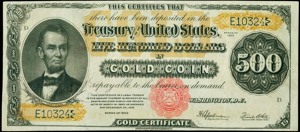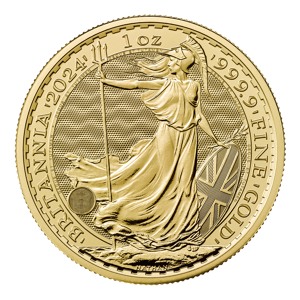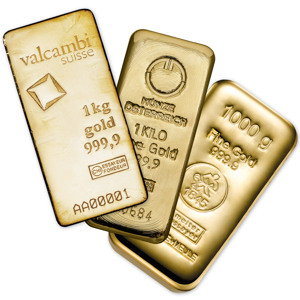Tavex uses cookies to ensure website functionality and improve your user experience. Collecting data from cookies helps us provide the best experience for you, keeps your account secure and allows us to personalise advert content. You can find out more in our cookie policy.
Please select what cookies you allow us to use
Cookies are small files of letters and digits downloaded and saved on your computer or another device (for instance, a mobile phone, a tablet) and saved in your browser while you visit a website. They can be used to track the pages you visit on the website, save the information you enter or remember your preferences such as language settings as long as you’re browsing the website.
| Cookie name | Cookie description | Cookie duration |
|---|---|---|
| tavex_cookie_consent | Stores cookie consent options selected | 60 weeks |
| tavex_customer | Tavex customer ID | 30 days |
| wp-wpml_current_language | Stores selected language | 1 day |
| AWSALB | AWS ALB sticky session cookie | 6 days |
| AWSALBCORS | AWS ALB sticky session cookie | 6 days |
| NO_CACHE | Used to disable page caching | 1 day |
| PHPSESSID | Identifier for PHP session | Session |
| latest_news | Helps to keep notifications relevant by storing the latest news shown | 29 days |
| latest_news_flash | Helps to keep notifications relevant by storing the latest news shown | 29 days |
| tavex_recently_viewed_products | List of recently viewed products | 1 day |
| tavex_compare_amount | Number of items in product comparison view | 1 day |
| Cookie name | Cookie description | Cookie duration |
|---|---|---|
| chart-widget-tab-*-*-* | Remembers last chart options (i.e currency, time period, etc) | 29 days |
| archive_layout | Stores selected product layout on category pages | 1 day |
| Cookie name | Cookie description | Cookie duration |
|---|---|---|
| cartstack.com-* | Used for tracking abandoned shopping carts | 1 year |
| _omappvp | Used by OptinMonster for determining new vs. returning visitors. Expires in 11 years | 11 years |
| _omappvs | Used by OptinMonster for determining when a new visitor becomes a returning visitor | Session |
| om* | Used by OptinMonster to track interactions with campaigns | Persistent |
| Cookie name | Cookie description | Cookie duration |
|---|---|---|
| _ga | Used to distinguish users | 2 years |
| _gid | Used to distinguish users | 24 hours |
| _ga_* | Used to persist session state | 2 years |
| _gac_* | Contains campaign related information | 90 days |
| _gat_gtag_* | Used to throttle request rate | 1 minute |
| _fbc | Facebook advertisement cookie | 2 years |
| _fbp | Facebook cookie for distinguishing unique users | 2 years |
What is 'The Gold Standard'?

The gold standard, a historic monetary system that once held sway over international finance, continues to captivate the imagination of economists, historians, and financial enthusiasts alike.
In this article we delve into the intriguing world of the gold standard, exploring its origins, operation, and ultimate decline. From the classical gold standard that prevailed during the 19th and early 20th centuries to the modern economic implications of its legacy, this article unravels the complex web of connections between gold and currency.
What is the Gold Standard?

The classical gold standard, also known as the international gold standard, was a system that prevailed during the 19th and early 20th centuries.
Under this system, participating countries established a fixed price for their currency in terms of a specific amount of gold. This created stability and predictability in international trade, finance, and among countries currencies.
How the Gold Standard Worked

In the gold standard era, each country’s central bank held a reserve of gold equal to the amount of its currency in circulation. This ensured that the currency could be exchanged for gold at any time.
This mechanism had a profound impact on the way currencies operated. It ensured that every unit of currency issued by the government had real, tangible value, as it could be exchanged for an equivalent amount of gold held in reserve. This stability and confidence in the currency were instrumental in fostering trust among citizens, businesses, and international counterparts.
The fixed exchange rate between currencies and gold facilitated international trade, as businesses and individuals could rely on stable exchange rates
Furthermore, it fostered an environment of economic discipline, as governments were compelled to maintain prudent fiscal policies to safeguard their gold reserves and ensure currency stability.
The Gold Standard’s Decline

The gold standard faced challenges during the two World Wars and the Great Depression.
Countries abandoned the gold standard to finance their wartime efforts and stimulate their economies
In 1944, after World War II, the Bretton Woods Agreement introduced a modified gold standard where the U.S. dollar was tied to gold at a fixed rate, and other foreign currencies were pegged to the dollar.
The Collapse of the Bretton Woods System
However, by 1971, due to mounting deficits and dwindling gold reserves, the U.S. suspended dollar convertibility into gold, effectively ending the Bretton Woods system and concluding the era of the gold standard.
This marked the end of the gold standard era, as other countries followed suit, allowing their currencies to float freely in the foreign exchange markets.
The Legacy of the Gold Standard

While the gold standard is no longer in use, its legacy continues to influence economic and monetary policy discussions in the world economy. Here are a few key takeaways from the gold standard era:
- Stability: The gold standard provided stability in currency exchange rates, reducing the risk of currency fluctuations for businesses and governments.
- Discipline: The gold standard enforced fiscal discipline on governments, as they had to maintain a stable currency by keeping their gold reserves in check.
- Limitations: Critics argue that the gold standard limited the flexibility of monetary policy, making it challenging for governments to respond to economic crises.
Key Takeaways
In summary, the gold standard, a historical monetary system, has left a lasting impact on finance and economics. This article explored its origin, function, and decline.
During the 19th and early 20th centuries, the classical gold standard fixed currency values to specific gold amounts, ensuring stability and predictability in global trade of goods and services. Currencies were backed by gold, promoting trust, discipline, and economic growth among nations and individuals.
However, the gold standard faced challenges during the World Wars and the Great Depression, leading countries to abandon it.
The post-World War II Bretton Woods Agreement introduced a modified gold standard with the U.S. dollar as the central currency. Yet, deficits and diminishing gold reserves led to the suspension of the dollar’s gold convertibility in 1971, ending the gold standard in the financial markets.
Though no longer in use, the gold standard’s legacy endures in economic discussions, emphasising stability and fiscal responsibility. It remains a significant chapter in global economic history, showcasing the enduring impact of a system that once linked world currencies to gold.


















